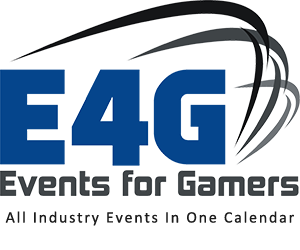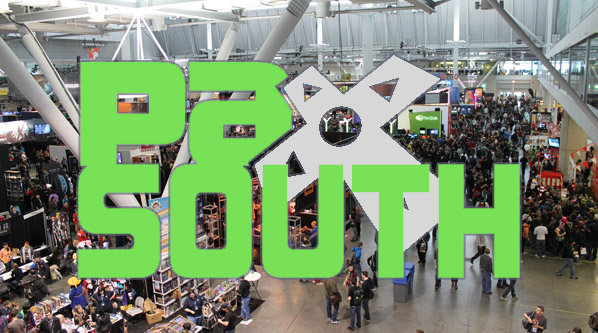Berlin, 2 April, 2014.
The organisers of the INTERNATIONAL GAMES WEEK BERLIN 2014 and its individual events presented the varied programme during a press conference yesterday and provided facts and figures about the games market and its importance for Germany and Berlin.
Around 34 million people in Germany use computer and video games. According to figures by the German Trade Association of Interactive Entertainment Software (BIU), the industry posted € 1.82 billion of turnover in 2013. A strong industry which is experiencing global growth with a new generation of consoles, game titles, powerfully told stories both content-wise as well as technically and visually, and with cross-platform game experiences. Games have long since become an established and growing element of the global entertainment industry.
The comments of the GAMES WEEK organisers made it clear that over a dozen individual events under the auspices of the INTERNATIONAL GAMES WEEK BERLIN 2014 will not only be appealing to the professional audience, but are also targeted at an interested general public.
Berlin has a week of games entertainment on offer for everybody
The Gamefest at the Computer Games Museum and the International Independent Games Festival A MAZE. / Berlin have games entertainment on offer for all of those interested, players and non-players, in all the various facets and forms. With Let’s Play and Speedrun events, Indie Games to play, the Night of the Re-narrated Game, the Japanese dressing-up trend Cosplay, game plays, award ceremonies, performances, workshops, talks and parties, the GAMES WEEK has opened up itself much more for the general public than was the case in the past at the German Games Days. The visitors can play on over 100 games from around the world in the exhibitions.
Let’s Play, Charity Gaming Marathon, Game Play and much more: Gamefest at the Computer Games Museum (8 – 13 April, Computer Games Museum)
The Gamefest at the Computer Games Museum approaches the world of video games in a playful way with innovative and experimental formats and invites everyone to join in. The highlight on Saturday, 12 April, will be the appearance of the Let’s Play superstars Gronkh and Sarazar, whose MyVideo and YouTube channels have clocked up several million subscribers: Let’s Play with Fans will give fans the unique opportunity to see the two gamers live in action. The Charity Gaming Marathon from Friday, 11 to Sunday, 13 April, will have well-known speedrunners from across Europe competing against one another for a good cause. The aim of the speedrun is to get to the end of a game as quickly as possible – by any means.
On Sunday, 13 April, the Computer Games Museum will be opening its costume and material store and inviting the visitors of the Gamefest to take part in the Cosplay. In the Japanese dressing-up trend, the goal is to depict a character from a computer game as close to the original as possible through the costume and behaviour. Analogous to a literary reading, the Gamesfest will present the Game play format which has been developed by the Foundation of Digital Gaming Culture and has a gamer’s game play commented live on stage by a moderator and a games expert (also on Sunday, 13 April).
A games trend originating in Budapest is conquering Europe: Escape the Room is the name of the game between digital virtuality and analogue reality where the players – locked in a real room and only connected via an ¨operator¨ with the outside world – have to solve a series of riddles in order to escape from the room.
In the following Night of the Re-Narrated Game, members of the audience can spontaneously come onto the stage and re-tell the complete story or an extract of a computer game as well as their personal experiences associated with the game. The winners of the competition organised in cooperation with the Berlin-based network Gamestorm will take home great prizes. The Gamefest ends with a concert by D’Artagnan who has arranged well-known game melodies in the style of gypsy jazz.
During the whole week, the GameFest will be presenting the exhibition Let’s Play! Computer Games from France and Poland where current computer games from both countries are exhibited in such a way that the visitors can play on them. The exhibition is being staged in cooperation with the Institut Français in Berlin, the Polish Cultural Institute in Berlin and the Instytut Adam Mickiewiecz and can be seen until 5 May. http://gamefest.computerspielemuseum.de
Play, Performances, Panels and Parties: A MAZE. / Berlin ( 9 – 11 April, Urban Spree & The WYE)
The 3rd International Independent Video Games Festival A MAZE. / Berlin will be presenting Europe’s largest and trend-setting international independent games exhibition on over 1,000 m2 in the Urban Spree with over 70 exhibitors from 20 countries. Visitors can play the 15 nominees for the A MAZE. Awards, which will be presented in three categories on 11 April, as well as a handpicked selection of unique independent games, playful installations and virtual reality experiences. A MAZE. celebrates the flourishing diversity, artistic interaction with technology and the cultural value of the most important art form of our age. The exhibited works by the independent games developers reflect the creative nature of gaming and the passion for developing digital game formats. The Local Multiplayer Picnic invites everyone to take part in a daily tournament, an interactive glitch game art showcase by the #weirdkids group and an appropriate music programme so that the Urban Spree will become the most exciting independent games location that Berlin, Europe, the world has ever seen. http://amaze-berlin.de
Europe’s largest professional conference for the games industry
GAMES WEEK is also about business. More than 2,500 professional delegates are expected at the various industry events. National and international games developers, publishers, distributors, investors and industry experts will be discussing current trends, new business models, economic developments, political prospects and legal questions as well as the current challenges confronting the games industry, but they will also use the opportunity to continue networking. Here are the most important industry events:
Opening Summit (8 April, Café Moskau)
The developments and trends of the global games market are the subjects of the Opening Summit on the morning of 8 April, which will officially open the GAMES WEEK. After the welcome address by Björn Böhning, head of the Senate Chancellery of the Land of Berlin, Brigitte Zypries, Parliamentary Secretary of State at the Federal Ministry for Economics and Energy, follows with a political keynote. The subsequent keynotes and panel discussions will see experts from Google and Amazon giving insights into their games strategies and prominent representatives of the independent entertainment scene discussing business strategies as well as the prospects for an independent entertainment industry. The speakers include Anne Beuttenmueller and Jens Bussmann (Niantic Labs/Google Cloud), Hemant Madan (Amazon Appstore), Dr. Klemens Kundratitz (Koch Media, producer and marketeer of digital entertainment products), Martin Hubert (Ströer Digital Media), Michal Boniface (Reloaded Games), the Finn Timo Vuorensola, producer of the sci-fi Nazi feature film comedy IRON SKY, Rami Ismail, founder of the Dutch indie game studios Vlambeer and the Canadian Jason Della Rocca, indie game developer icon and founder of the Execution Lab.
Quo Vadis. Create. Game. Business (8 – 10 April, Café Moskau)
International top speakers are also expected at the largest German game developer conference QUO VADIS, which kicks off straight after the Opening Summit: Matias Myllyrinne, CEO of the Finnish Remedy Entertainment, the developer studio of the globally successful games MAX PAYNE and ALAN WAKE, Robert Tercek, one of the most distinguished creators of interactive content, TV director, game designer, digital artist, new media consultant for, among others, Anthony Robbins, Oprah Winfrey, Deepak Chopra, founder of the Game Developer Conference Mobile Symposiums, Hilmar Veigar Pétursson, CEO of the Icelandic MMO game developer CCP Games (EVE Online, WORLD OF DARKNESS), the game developer and designer Bob Bates, known for such titles as TIMEQUEST, UNREAL II: THE AWAKENING, SACRED 2, responsible for almost 40 games, formerly Chief Creative Director von Zynga, Chris Taylor (Wargaming.net), Guido Henkel (G3 Studios) and game developer and pioneer Don Daglow as well as many other speakers. More at www.die-entwicklerkonferenz.de.
A MAZE. / Berlin (9 – 11 April, Urban Spree & The WYE)
Apart from its events for the general public, A MAZE. / Berlin will be presenting an exquisite selection of international speakers, well-known protagonists from the area of independent games development and the artistic indie scene. Already confirmed: Jonathan Blow (USA), Tale of Tales (Belgium), Cara Ellison (UK), Petri Purho (Finland), Major Bueno (Germany), Pippin Barr (New Zealand), David Calvo (France), Jessica Curry (UK), Christoffer Hedborg (Sweden), Fernando Ramallo (Argentina) and more. More at http://amaze-berlin.de.
Matchmaking Dinner (8 April, Spindler & Klatt, by invitation only)
The Matchmaking Dinner unites and promotes networking between the most important decision-makers from the games, information, communications and technology industries as well as the worlds of politics and institutions. A carefully selected seating arrangement ensures for relevant ‘matching’ and promotes sustainable networking.http://gamesnet-bb.de.
polishgamesday (10 April)
On 10 April, Poland will be in the focus of the GAMES WEEK. The events of the polishgamesday, which will devoted to the Polish games industry, includes the exhibition: “Let’s Play! Computer games from France and Poland” in the Computer Games Museum, a panel on the Polish games industry at Quo Vadis and at A MAZE. / Berlin, the screening of Polish games trailers and an exclusive presentation of the game “This War of Mine” by 11bit in the Cubix at Alexanderplatz, and the closing party in the Games Academy. Finally, the polishgamesday will also serve as the launchpad for the project BERLIN MEETS POLAND, which aims to create a dynamic and sustainable network between the Berlin and Polish games industries.
Pressekontakt:
Dr. Kathrin Steinbrenner/Kristian Müller
SteinbrennerMüller Kommunikation
T:+49 (0) 30-4737. 2191/.2192
E: media@gamesweekberlin.com
Facebook: www.facebook.de/gamesweekberlin.
Twitter: @gamesweekberlin // #gamesweekberlin
About the INTERNATIONAL GAMES WEEK BERLIN 2014
The INTERNATIONAL GAMES WEEK BERLIN 2014 is a leading cross-industry communication and networking platform for games business, development and culture. More than six individual events over six days offer a plethora of information on the topic of games. Participants include German and international game developers, publishers, investors and gamers as well as representatives of public institutions and the media industry. In 2013, more than 6,000 visitors came to the Games Capital of Berlin-Brandenburg. The INTERNATIONAL GAMES WEEK BERLIN 2014 follows in the footsteps of the DGT – Deutsche Gamestage – an event initiated by the Medienboard Berlin-Brandenburg in Berlin in 2007.
The umbrella brand of the INTERNATIONAL GAMES WEEK BERLIN 2014 from 8-13 April includes the following events:
– Opening Summit: the official opening event, April 8
– Matchmaking Dinner: VIP networking event, April 8
– Quo Vadis. Create. Game. Business: games business and development conference, April 8-10
– A MAZE. / Berlin: Independent video games festival, April 9-11
– Gamefest at the Computerspielemuseum: (Computer Games Museum), April 8-13
– Party of the European Games Award, April 9
– Kabam Media Reception, April 9
– polish games day, April 10
– Making Games Talents: recruitment event, April 12
and many more.
Medienboard Berlin-Brandenburg funds the events. The INTERNATIONAL GAMES WEEK BERLIN 2014 is hosted and coordinated by Booster Space.
Event Partners: A MAZE., Aruba Events, Computer Games Museum, Foundation of Digital Gaming Culture, games.net berlinbrandenburg, IDG Media, Kabam Games, Polish Institut Berlin
Institutional Partners: G.A.M.E. Bundesverband der Computerspielindustrie, ACI Games Brazil, Afri GameZone Academy, Berlin Partner für Wirtschaft und Technologie, Digital Dragons Cracow, EGCA – European Game Conference Alliance, EGDF – European Games Developer Federation, GameIS, Malta Enterprise, media.net berlinbrandenburg, Polska – Botschaft der Republik Polen, Projekt Zukunft Berlin, TIGA – Representing the Games Industry, UK Trade & Investment, UKIE – The Association for UK Interactive Entertainment, WGK – Polish Conference on Computer Games Development
Funding and Sponsor Partners: Medienboard Berlin-Brandenburg, BIU – Bundesverband Interaktive Unterhaltungssoftware, Amazon, Blacklane, Creatives Loop International, EMC, GAN Ströer, PaymentWall, FundedByMe.
Main and Premium Partners of the Quo Vadis: Goodgame Studios, Bigpoint, Google Cloud Platform, InnoGames, King, Microsoft, Osborne Clarke, Wargaming.net
Main and Premium Partners of the Gamefest: Stiftung Digitale Spielekultur, Institut Francais Deutschland, Instytut Adam Mickiewiecz/Polnisches Institut Berlin, reBuy.de, Studio71/Let’s Play Together, Faces Veranstaltungstechnik
Main and Premium Partners of the A MAZE. / Berlin: ZKM, SAE Institut, Game Science Center, Unity Technologies
Media Partner: berlin poche, DW-Shift, develop, Der Tagesspiegel, FluxFM, GamesMarkt, golem.de gamesindustry.biz, in your pocket, making games, MediaXP, Studio71, MyVideo














